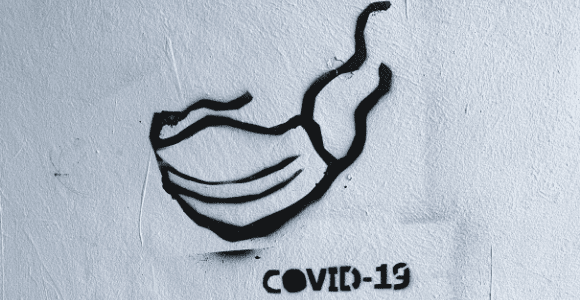Welcome readers! Please subscribe through the buttons on the right if you enjoy this post.

In Luke, Jesus is asked when the kingdom of God was coming. He answers:
“The kingdom of God is not coming with things that can be observed; nor will they say, ‘Look, here it is!’ or ‘There it is!’ For, in fact, the kingdom of God is among you [plural].” Then he said to the disciples, ‘The days are coming when you will long to see one of the days of the Son of Man, and you will not see it. They will say to you, ‘Look there!’ or ‘Look here!’ Do not go, do not set off in pursuit. For as the lightning flashes and lights up the sky from one side to the other, so will the Son of Man be in his day.” (Luke 17:20-37)
In Luke’s gospel, Jesus is warning his society about certain paths toward liberation given the violent retribution that Rome responded to uprisings with.
I believe that Jesus taught liberation, but what is clear is that he is balancing that desire with the desire for survival, too. Womanist scholars introduced me to this tension between liberation and survival, and I see it in Luke’s version of the Jesus story.
Jesus provides an alternative to liberation attempts that create devastation in verses 20-21:
“The kingdom of God is not coming with things that can be observed; nor will they say, ‘Look, here it is!’ or ‘There it is!’ For, in fact, the kingdom of God is among you.”
Kingdom rhetoric is problematic for us today given both its non-democratic and patriarchal nature. I have struggled over the years to find other language for the gospel’s use of the term “kingdom.” I know it had meaning for the original audience of the gospels. What language might we use today? I like the language I’ve heard Rev. Dr. Kelly Brown Douglas use: “God’s just future.” God’s just future is societal justice and distributive justice. It’s a vision for a distributively just society, a way of orienting society after the golden rule.
The proclamation of God’s just future and the seeds for that future being present with us right now: that was Jesus’ gospel! It is the centerpiece of each synoptic Jesus story (Mark, Matthew, and Luke), especially Luke’s gospel.
Pervading each step through Luke’s version is this announcement of the kingdom or God’s just future:
“Soon afterwards he went on through cities and villages, proclaiming and bringing the good news of THE KINGDOM OF GOD.” (Luke 8:1)
“And he sent them out to proclaim THE KINGDOM OF GOD and to heal.” (Luke 9:2)
“Whenever you enter a town and its people welcome you, eat what is set before you; cure the sick who are there, and say to them, ‘THE KINGDOM OF GOD has come near to you.’” (Luke 10:8-9)
In our original passage, the disciples are challenging Jesus as a “prophet” to present his “revolutionary vision,” to explain what his vision of a liberated society is. In response, Luke’s Jesus contrasts his approach with other liberation theories current at the time Luke’s gospel was written, and he issues a warning.
Jesus’ words, “The kingdom of God is not coming with things that can be observed; nor will they say, ‘Look, here it is!’ or ‘There it is!’ For, in fact, the kingdom of God is among you,” had a social context. The 1st Century historian Josephus gives us a window into Jesus’ words, “Look, here it is!” or “There it is!” Josephus writes around 50 C.E. when revolutionary prophets led large groups of people into the desert under the pretense that, once there, God would show them signs of approaching freedom. During these incidents, the Roman procurator, Felix, viewed this as the first stage of revolt and sent cavalry and heavy infantry to cut the groups into pieces (see Josephus, The Jewish War, Williamson and Smallwood, p. 147).
The most infamous of the revolutionary prophets who promised “signs to be observed” was a militaristic messiah referred to as “the Egyptian,” who is also mentioned in Acts 21:38: “Then you are not the Egyptian who recently stirred up a revolt and led the four thousand assassins out into the wilderness?”
Josephus describes the event as follows:
“Arriving in the country, this man, a fraud who posed as a seer, collected about 30,000 dupes, led them round from the desert to the Mount of Olives and from there was ready to force an entry into Jerusalem, overwhelm the Roman garrison, and seize supreme power with his fellow-raiders as bodyguard.” (Josephus, The Jewish War, Williamson and Smallwood, p. 147. Most scholars believe Josephus’ number to be quite exaggerated.)
In a parallel account of this event, Josephus includes the “sign” that this “Egyptian” had claimed would be shown to the people in the course of their liberatory uprising: a sign like Joshua’s sign at the Battle of Jericho. At the “Egyptian’s” command, the walls of Jerusalem would fall down so that his followers could enter and seize the city. However, before any such a sign could be attempted, the Roman cavalry and infantry slew and captured hundreds and put the rest to flight, including the militaristic messiah himself (Josephus, Antiquities, 170-172).
These leaders were not lunatics but hopeful messiah figures, action prophets who contemporary scholars now see as attempting to lead movements of Jewish peasants to exert human efforts that would be accompanied by divine acts of empowerment and deliverance. Their logic went something like, “Success is dependent on combining human effort with divine power.” If they wanted divine deliverance, they must first present a violent human effort for Yahweh to bless, and God would meet their efforts if they acted.
The rhetoric of these militaristic messiahs was steeped in the symbols of the Exodus and the conquest of Canaan. Today, this is called sign propaganda. When a contemporary politician uses symbols of the American Revolution to inspire a following, they are doing the same. A much darker example is when White supremacists wave the Confederate flag when then they protest or rally. The militaristic messiahs of the mid-1st Century in Jerusalem used this technique of employing symbols from their own past to win over sectors of their populace that wanted liberation from Rome.
Josephus also describes another event where Romans massacred a thousand Jewish women and children obeying another Jewish militaristic messiah “prophet.” This leader had told the people in Jerusalem that God had commanded them to receive the signs of deliverance in the Temple (Josephus, The Jewish War, p. 360). Elsewhere, Josephus describes a “Samaritan prophet” who was a contemporary “messiah” of Jesus in the time of Pontius Pilate. This Samaritan prophet’s “sign” was to lead the people up the sacred Mount Gerizim to find holy vessels left there by Moses. Instead, Pilate’s troops attacked and overwhelmed the armed crowd at the foot of the mountain (Josephus, Antiquities, 85-87).
So when Jesus says “The Kingdom is not coming with signs to be observed,” Luke is emphatically rejecting these popular methods of leading masses of Jewish poor people to die when Roman soldiers retaliated. He warns specifically, “They will say to you, ‘Lo there!’ or ‘Lo, here!’ Do not go, do not follow them” (Luke 17:23). Those who followed these would-be messiahs would perish needlessly in horrific slaughters.
Today, there is a breaking point once again. Those most deeply impacted by the injustice inherent in our present system face injustice amplified and aggravated by the COVID-19 pandemic.
Can Jesus’ warnings offer us anything as we work toward building the kind of world we want to live in? We often use the language at RHM of building a world that is a safe, compassionate, inclusive, and just home for everyone. I also like the language Ashlee Woodard Henderson, co-director of the Highland Center in Tennessee, used to sign off on a Facebook post: “Sweet dreams of revolutionary change, a world where everyone has what they need, and no harm exists for any of us.”
That’s what we need right now. That’s the kind of world I want to be building. That’s the kind of world I want to live in, where everyone has when they need, not just to survive but to thrive, and no systemic harm exists for anyone.
We’ll discuss the last part of Jesus’ warning and its relevance to our context today, next.













